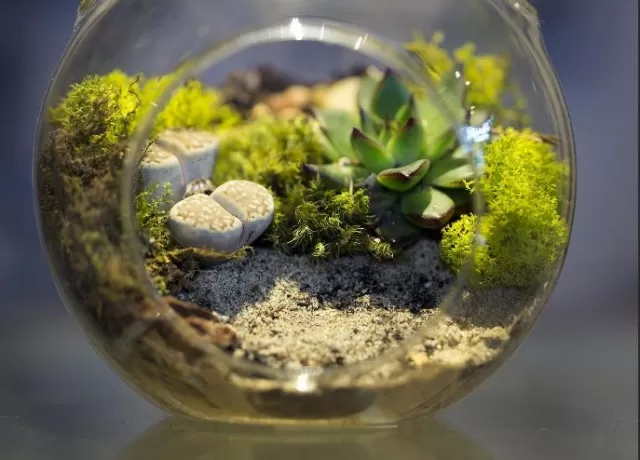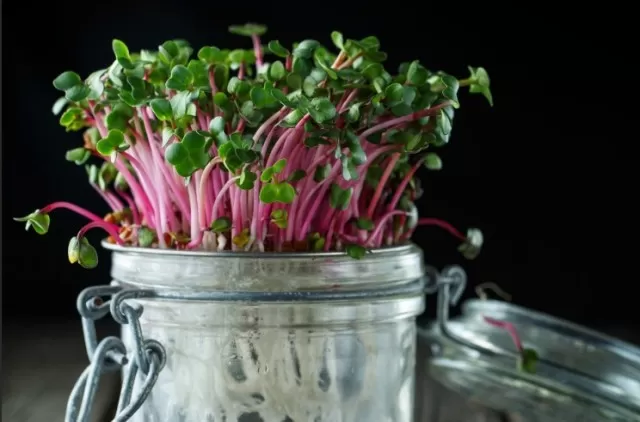11 Indoor Gardening Projects Suitable for All (Part 2).Embarking on indoor gardening projects doesn’t require a horticulture degree or a wealth of gardening experience. With a touch of enthusiasm and a bit of creativity, anyone can nurture and enjoy their own indoor garden. Indoor gardening projects offer a fulfilling and therapeutic way to connect with nature, even if you have limited outdoor space or gardening expertise. Whether you’re a seasoned gardener or a novice, these easy projects allow you to bring the beauty of plants into your home, enhance your living space, and enjoy the many benefits of indoor greenery.
Reduce, Reuse, Regrow: Grow Veggies from Scraps

Fresh veggies are undeniably good for your health, but what you might not know is that you can easily regrow many of them from kitchen scraps.
It’s a sustainable and cost-effective way to enjoy a continuous supply of produce.
To get started, save the leftover bases of vegetables like romaine lettuce, celery, green onions, or chives.
Place these bases in a bowl with just enough water to cover the roots, and then set the bowl on a sunny windowsill. With a little patience and care, you’ll witness these scraps sprout new growth, eventually allowing you to harvest fresh, homegrown vegetables.
Regrowing veggies from scraps not only reduces waste but also connects you to the joy of gardening, even if you have limited outdoor space.
It’s a simple and rewarding practice that contributes to a more sustainable and eco-friendly lifestyle.
Savor the Flavor: Get Started with Easy-to-Grow Herbs
If you’re looking to kickstart your indoor garden project, herbs should be at the top of your list.
They are some of the easiest plants to grow from seeds, and the best part is that as you trim off bits and stems to use in cooking, many herb plants will respond by growing even more robustly.
To get started, choose a sunny windowsill and plant the herb seeds in well-drained potting soil.
Herbs thrive with plenty of light, so ensure they receive adequate sunlight exposure. Among the simplest and most rewarding herb varieties to grow, as recommended by Pass the Pistil, are cilantro, basil, parsley, dill, and oregano.
Growing herbs not only provides you with fresh and aromatic ingredients for your culinary creations but also allows you to enjoy the satisfaction of nurturing and tending to your indoor garden.
It’s a delicious and fulfilling way to bring a touch of nature into your home.
Miniature Ecosystem: The Charm of Terrariums

Terrariums offer a captivating glimpse into miniature ecosystems, where small plants like dwarf ferns thrive with minimal maintenance.
They create their own evaporation and moisture cycle, eliminating the need for regular watering.
Creating your own terrarium is a delightful project and can be as simple as repurposing a leftover quart or gallon jar with a lid.
Alternatively, you can opt for the convenience and aesthetic appeal of ready-to-plant terrariums, such as The Fellie Glass Terrarium available on Amazon. This particular terrarium features an attractive geometric metal frame and glass panels, making it a stylish addition to your home decor.
Terrariums are not only visually enchanting but also offer an opportunity to connect with nature in a unique and compact way.
Whether you choose to DIY or invest in a ready-made terrarium, you’ll be embarking on a journey into the fascinating world of mini ecosystems that require minimal care and deliver maximum charm.
From Dinner to Decor: Grow Sweet Potato Vine in a Jar
The versatile sweet potato vine, often used in outdoor summer pots and containers, can also thrive indoors, and it’s remarkably easy to grow from a leftover tuber.
Here’s how to do it:.
Take a sweet potato and poke a few toothpicks into its sides.
Suspend the bottom part of the sweet potato in a jar of water, making sure the toothpicks hold it in place.
Before long, you’ll notice an abundance of bright green sprouts emerging from the potato.
These sprouts can be harvested and used in salads or allowed to grow and vine out, creating a stunning cascade of green foliage over the side of a table or shelf.
This creative and sustainable project not only adds a touch of greenery to your indoor space but also showcases the beauty of repurposing kitchen scraps for decorative purposes.
Microgreens: Nutrient-Rich and Easy to Cultivate

Microgreens, the tender stems and leaves of young edible greens like spinach, arugula, and butter lettuce, are not only bursting with nutrition but also a breeze to grow.
These miniature greens are typically cultivated in soil and harvested as soon as their first set of true leaves emerges.
To get started, you can sow the seeds of your favorite greens in a seed-starting flat or even at the bottom of a milk carton filled with potting mix.
Alternatively, you can opt for the convenience of microgreen kits, such as the HAMAMA Microgreen Kit available on Amazon. These kits often include pre-seeded fiber “quilts,” simplifying the growing process even further.
Growing microgreens is a satisfying and healthful endeavor that allows you to enjoy fresh, nutrient-rich greens right at home.
They can be easily incorporated into salads, sandwiches, and various dishes, adding a burst of flavor and nutrition to your culinary creations.
*The information is for reference only.